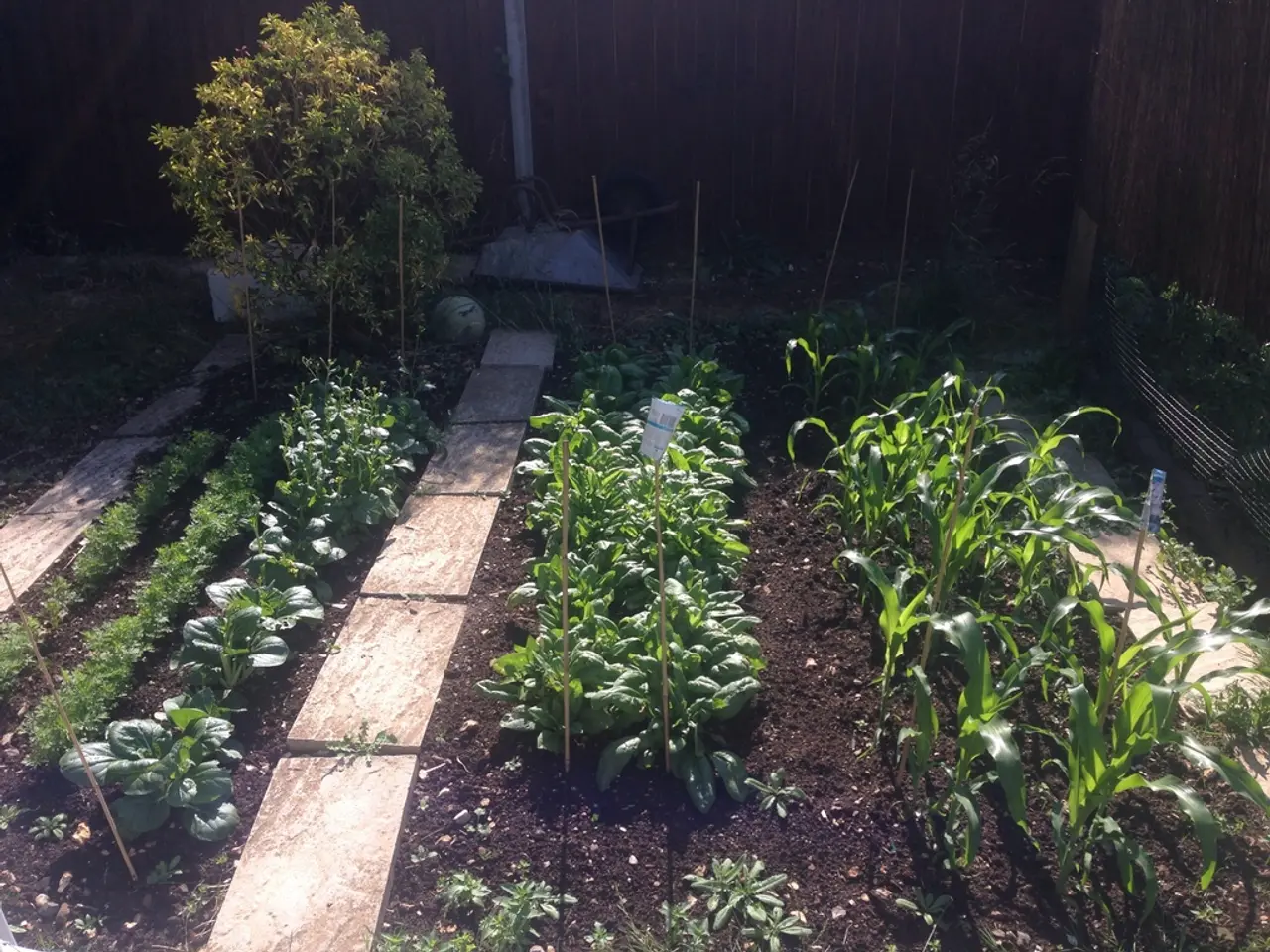Successful Ivy Propagation: Top Strategies Revealed
English ivy is a popular indoor houseplant, known for its trailing vines that spill out of containers. When it comes to propagating this plant, there are two main methods: rooting in soil and rooting in water. Here's a guide to help you understand the differences and benefits of each method.
Rooting in Soil
To root English ivy cuttings in soil, follow these steps:
- Take healthy cuttings (4-6 inches long) from non-flowering stems.
- Remove lower leaves from about one-third to half of the cutting.
- Optionally, dip the base in rooting hormone to stimulate root growth.
- Insert the cuttings into a moist, well-draining growing medium (e.g., a mix of peat and perlite or potting soil), covering about one-third to one-half of the cutting.
- Keep the soil moist but not waterlogged and place in indirect light.
- Roots typically develop in a few weeks, after which new growth indicates successful rooting.
Rooting in soil offers several benefits:
- Establishes plants directly in the growing medium, reducing transplant shock.
- Soil provides nutrients and stable support for roots.
- Mimics natural rooting conditions for some plants, including ivy.
- Easy to monitor root growth visually.
- No need for immediate transplanting if water is replaced regularly.
- Lower risk of fungal disease if leaves are removed properly.
However, there are also risks to consider:
- Possible overwatering can lead to rot.
- Cutting might dry out if soil is not kept moist.
- Slower to observe root development directly.
- Poor drainage can cause root diseases.
Rooting in Water
Rooting English ivy cuttings in water involves these steps:
- Take cuttings with at least four leaves, cutting just below a node.
- Remove the lower two or three leaves that would be submerged to prevent rot.
- Place cuttings in a clear container filled with water, ensuring nodes are submerged but leaves remain above water.
- Position container in indirect sunlight to avoid algae growth.
- Change water every few days to keep it fresh.
- Roots will emerge from nodes in 1-3 weeks.
- Once roots are a few inches long, they can be transplanted into soil.
Benefits of rooting in water include:
- Easy monitoring of root growth as it's visible in the water.
- No need for soil or a growing medium.
- No risk of poor drainage.
However, there are also risks to consider:
- Rooted stems can develop weak roots adapted to water, which may need acclimation when moved to soil.
- Risk of rot if leaves are not removed or if water is stagnant.
- Requires transplanting to soil once roots form, which can cause some transplant shock.
In summary, rooting in soil often leads to stronger root systems ready for planting without shock, but requires careful moisture management. Rooting in water offers easy monitoring and less initial care but can result in weaker roots that need adjustment when transplanted. Many gardeners start in water to observe rooting, then transfer to soil once roots form for best results.
Propagating English ivy can be done at any time of the year, and the plant can be both attractive and controversial, often considered invasive in many areas. Layering is an easy way to encourage new root growth in outdoor English ivy. Coarse sand or perlite are suitable options for a moist rooting medium for stem cuttings.
When it comes to propagating English ivy in a home-and-garden setting, gardeners can choose between two main methods: rooting in soil and rooting in water. Rooting in soil offers benefits like establishing plants directly in the growing medium, providing nutrients, stable support for roots, and easy visual monitoring of root growth. However, there is a risk of overwatering leading to rot. On the other hand, rooting in water is beneficial due to its ease of root monitoring and lack of risk for poor drainage. However, rooted stems may develop weaker roots when moved to soil.




